We're Going In: Mount Calvary Cemetery
A walk here is a lot different from a walk through Forest Lawn
Mount Calvary Cemetery is a mystery to many.
It’s not grand like Forest Lawn. If you are used to walking Forest Lawn’s winding roads, as I am, Mount Calvary an feel … well … a little weird. I will get to that in a second.
Meanwhile, I will just say I did not know much about the cemeteries that make up the huge, rambling Mount Calvary Cemetery Group, in Cheektowaga on Pine Ridge Heritage Road. Even though, like a lot of Buffalonians, I have family here.
Still, the unfamiliarity is part of the draw.
Mount Calvary holds its own place in Buffalo history. Its roots go back to 1859, with the founding of the United German and French Cemetery — the oldest in the graveyard group. These are consecrated grounds, blessed by Catholic bishops.
All this explains why, when Nancy Kaszynski of Explore Buffalo offered to show me around, there was only one thing to say:
We’re going in.
Calvary, not Cavalry
The first challenge is just saying “Mount Calvary.” It’s hilarious how people goof and say “Mount Cavalry.” Sure, we all know it’s Calvary, the hill where Christ was crucified. However it is easy to have that slip of the tongue.
Kaszynski laughed about that frequent mistake. It has happened to her, she admitted. Once “Cavalry” gets in your head, it’s hard to shake.
The second challenge adjusting to the fact that you are in a Catholic cemetery. Here is where Mount Cavalry — er, Calvary — really parts ways with Forest Lawn. The landscape is very different.
At Forest Lawn, you’re entertained by occasional statues of the departed. An earnest Lutheran pastor in full robes (here’s looking at you, Rev. Jung). Or a Civil War soldier striking a noble pose. Wealthy obelisks point skyward, announcing the city’s founding families.
Often, graves at Forest Lawn at least hint at who’s who. Millard Fillmore’s grave proclaims his presidency. The Rev. William Shelton is identified as dean of St. Paul’s Cathedral. Rick James’ gravestone features a picture of him.
Not so at Mount Calvary. There are no looming obelisks. No personal statues. No clues.
Just modest gravestones, with reverent figures of Jesus, Mary, angels, and saints.
Nowhere does Frank X. Schwab’s grave say that he was mayor of Buffalo. It doesn’t mention that he played a role in ending Prohibition. All you see is a simple open book inscribed with the Hail Mary.
There’s no inscription, no fanfare — just this humble marker. His name does appear on a plaque by the roadway, though. He was, after all, a trustee. That’s mentioned first.
Michael Shea — yes, of Shea’s Performing Arts Center fame — is also easy to miss. The great impresario, who lit up Buffalo with his theaters, now lies quietly under lilies and the quiet sorrow of the Pietà.
Lilies are a symbol of purity, Kascynzki explained. At Mount Calvary, you don’t see the urns and broken columns you see at Forest Lawn. Catholic symbolism is different.
Irish graves might bear the Celtic cross, a blend of cross and circle, created by St. Patrick when he drove the snakes out of Ireland. Circles signify eternity. Walking through Mount Calvary, you will notice graves arranged in wide circles. Arches and gates stand for passage into the next life.
Frequently, Kaszynski points out, you’ll see a cross tilted to one side. That symbolizes the Catholic concept of “carrying your cross” — sharing in Christ’s suffering.
Wings and hot dogs
Their names aren’t on our street signs. Yet Mount Calvary quietly reminds you how deeply America’s culture has been shaped by waves of Catholic immigrants — German, Italian, Polish, Irish.
The final resting place of the Sahlen family — yes, the hot dog folks — features a statue of St. Elizabeth of Hungary, carrying bread.
Kaszynski said Mount Calvary is also home to the man credited with inventing beef on weck. We couldn’t find him.
But you feel a twinge standing before the final resting place Frank and Teresa Bellissimo — the couple linked to Buffalo’s most famous culinary invention, the chicken wing. Their stone identified them simply as “Father” and “Mother.” The inscription reads: “Mother Mary, Pray For Us.”
As Sinatra sang, we all face that final curtain. Tommy Cottonaro, born in Italy in 1914, was a Munchkin in the Wizard of Oz. His grave bears an image of the Sacred Heart.
It is tempting to imagine Cottonaro in heaven — taller, his best self, freed from the limitations of his lifetime. Mount Calvary Cemetery gets you thinking about the hereafter.
The symbols of eternity and the sameness of the monuments bring home the idea that all are equal in the sight of God, and that what really matters is not this world, but the next.
Traditionally, the Catholic Church universally reflected that sensibility. A Latin Requiem Mass includes no eulogy. It’s not a “celebration of life.” It’s a solemn ritual, focused not on memories or achievements, but on preparing the soul — with every ‘i’ dotted and every ‘t’ crossed — for the next world.
We came in not knowing much. Just a name, Mount Calvary, and the sense that this place was unfamiliar, even a little strange. We came out with a new sense of Buffalo’s history, and of the world after this one.
A parting gift from the immigrants who helped build this city — passed down to us with the wings and the hot dogs.
Mary Kunz Goldman is known in Buffalo for her long career with The Buffalo News, writing about classical music and authoring the long-running Buzz column as well as a popular series titled “100 Things Every Western New Yorker Should Do At Least Once.”
Her new independent feature “We’re Going In” celebrates curious adventures around town. Previous “We’re Going In” columns have featured a Goodwill madhouse known as “the bins”; a memorable Met opera simulcast; and a journey through the Junior League’s 2025 Decorators Show House.
Thanks to all who subscribe! To get a look at Mary’s complete online publication, click on MaryKunzGoldman.Substack.com.





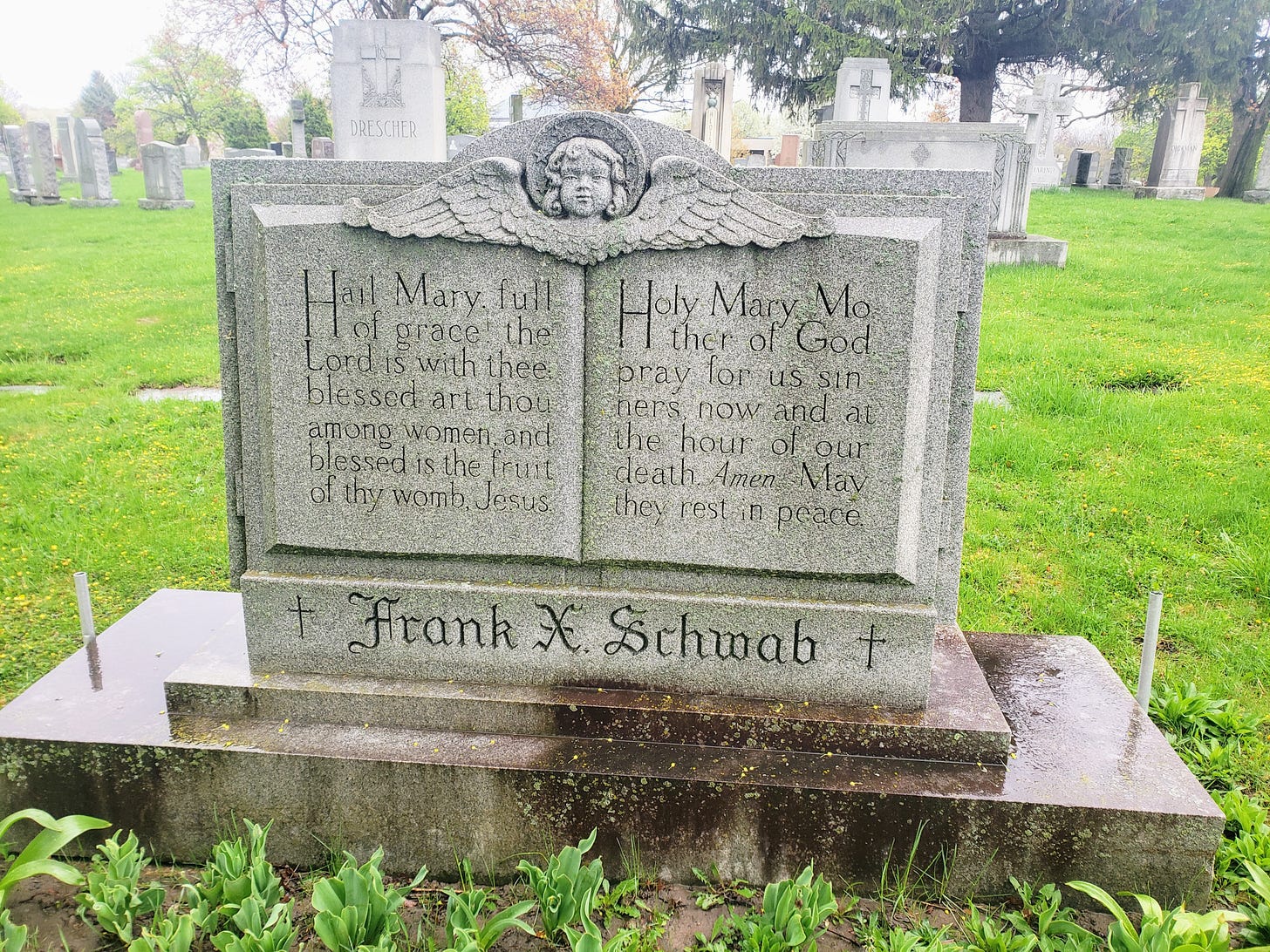

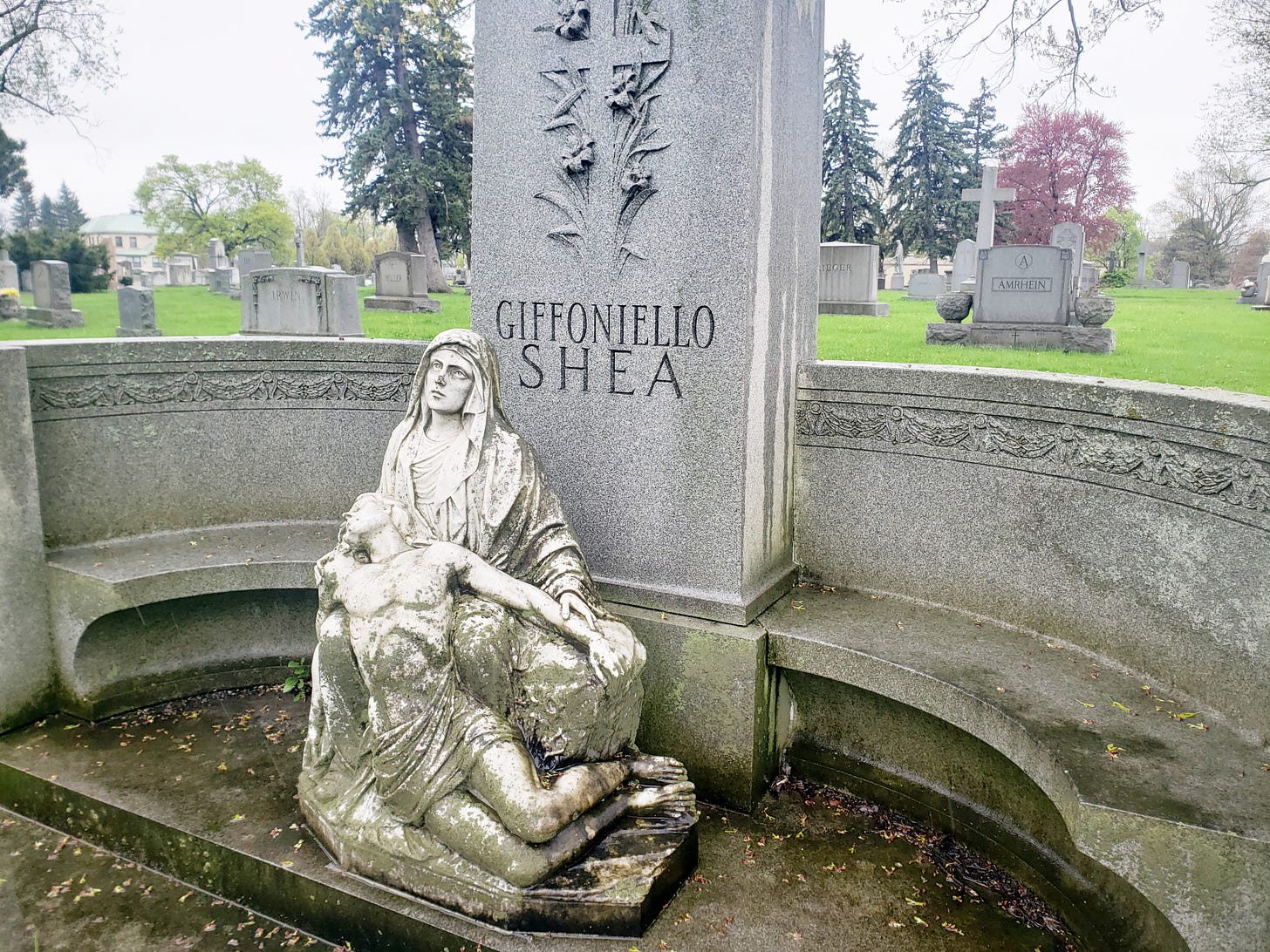
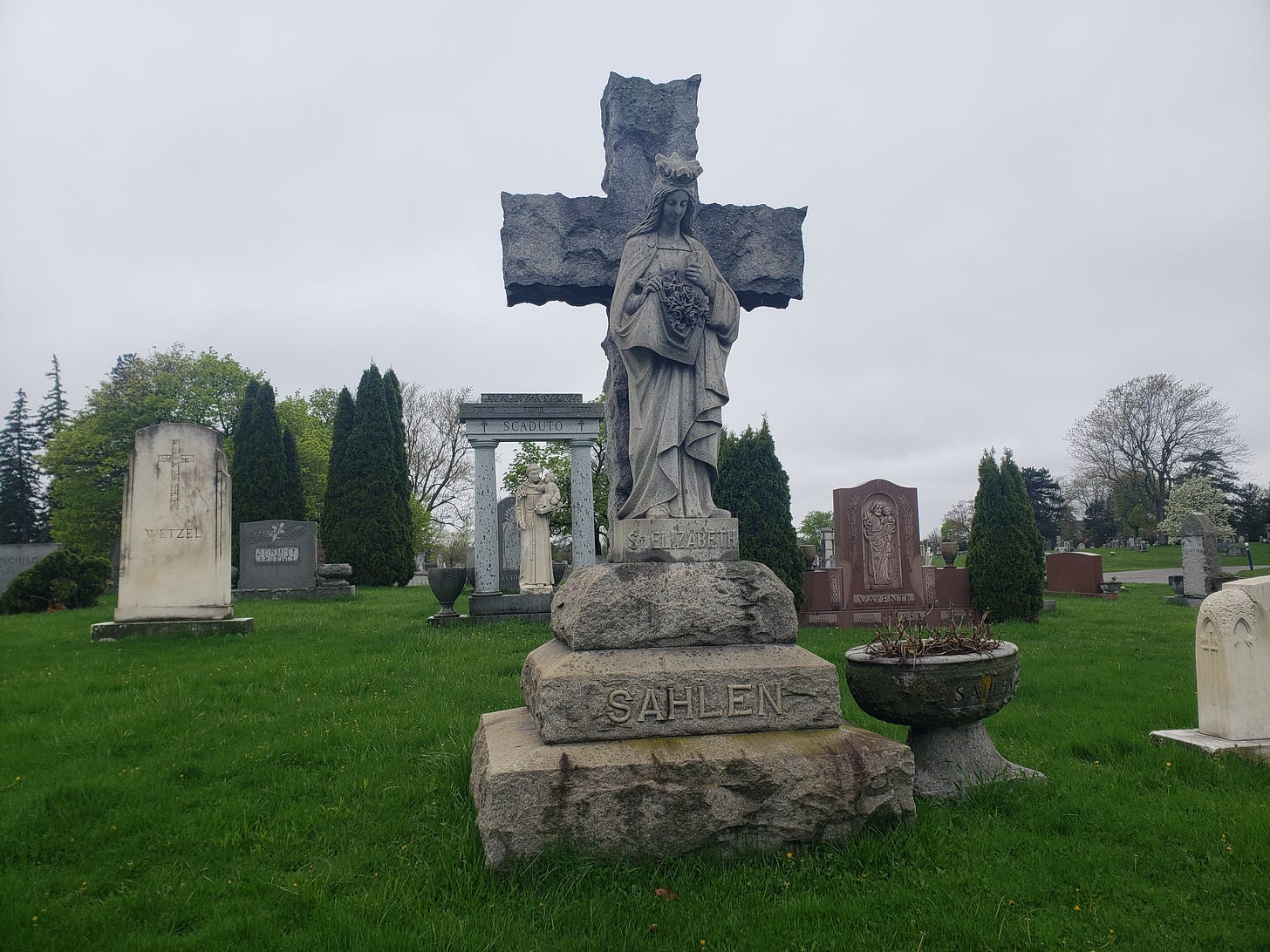
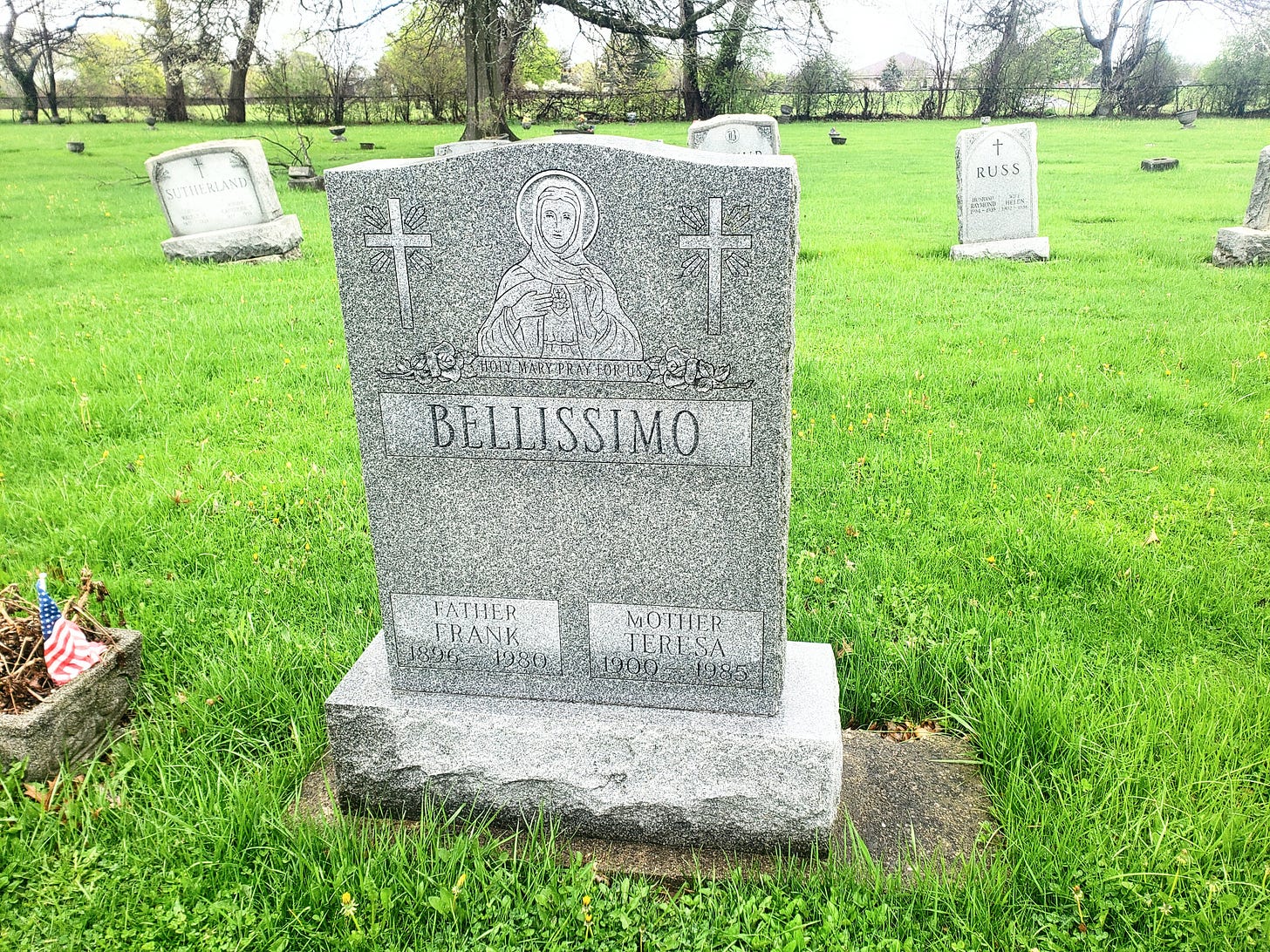
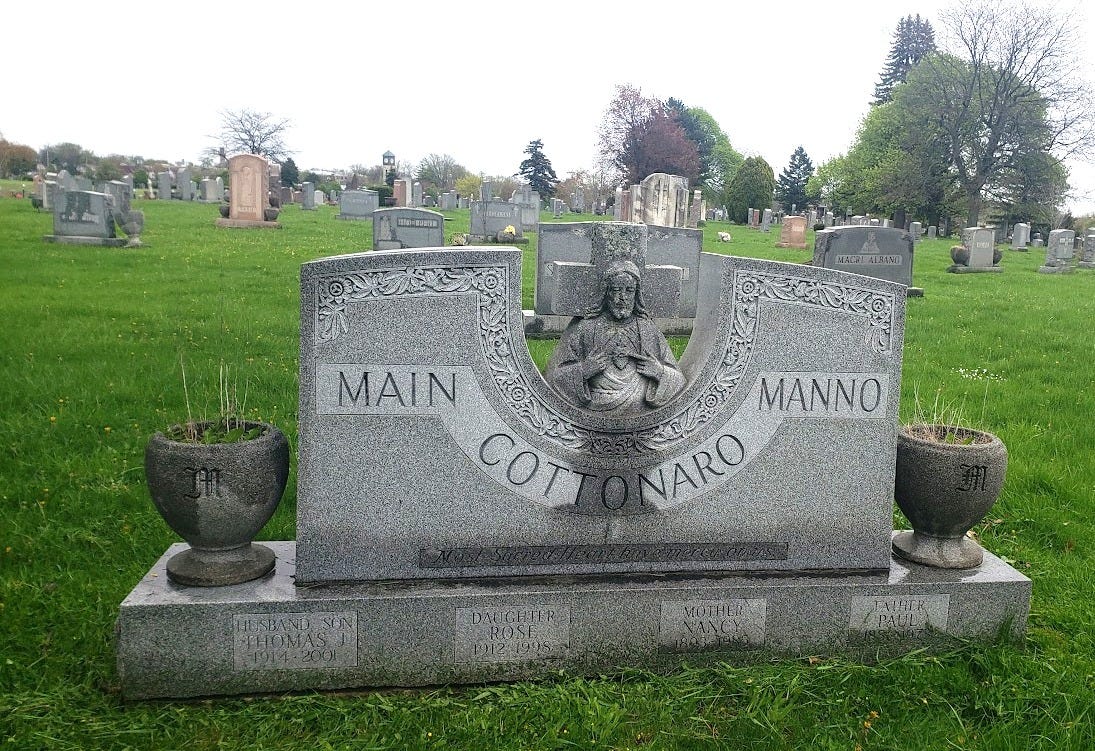
I used to live just off Genesee St. and I loved walking the old United French and German Cemetery. I had no idea about all the famous people buried there. I am not from WNY, but my husband’s ancestors are in St. Stan’s on Pine Ridge.
Love this piece. I believe my grandparents and uncle are there. I haven't been there since he was buried. Hey, did you see the piece about the Pope's family in the Times? I wonder if his grandmother, Ms. Fontaine, was in Lackawanna at Father Baker's OLV Home. What a thing that would be, that her grandson would become pope.